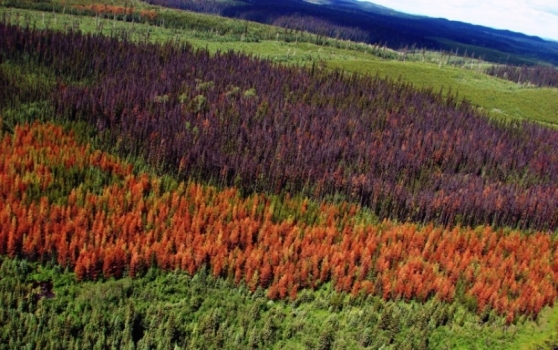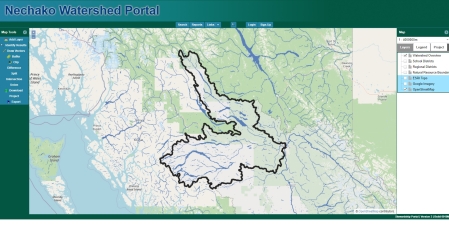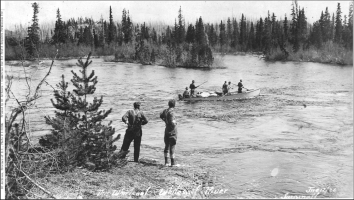Theme 4: Co-benefits for Climate, Catchments (Watersheds) and Communities

 At the heart of our mission is the development of the Nechako Watershed Portal, a digital platform meticulously crafted to serve as a bridge between research findings and the diverse communities of the NRB. This web-based geospatial tool is proof of our collaborative spirit, designed in northern BC and tailored specifically to the Nechako context and its users. The portal is more than just a data repository; it's a living archive, dynamically surfacing hidden information about our local natural, human, and cultural resources. With innovative features like pictures and videos, it's a testament to our commitment to engaging communities meaningfully.
At the heart of our mission is the development of the Nechako Watershed Portal, a digital platform meticulously crafted to serve as a bridge between research findings and the diverse communities of the NRB. This web-based geospatial tool is proof of our collaborative spirit, designed in northern BC and tailored specifically to the Nechako context and its users. The portal is more than just a data repository; it's a living archive, dynamically surfacing hidden information about our local natural, human, and cultural resources. With innovative features like pictures and videos, it's a testament to our commitment to engaging communities meaningfully.
Our journey is marked by strong collaborations with key partners, including the Nechako Environment and Water Stewardship Society (NEWSS), School District 91 (SD91), and the Cheslatta Carrier Nation. With NEWSS, we're developing the portal to facilitate information exchange about their vital restoration work in riparian areas. This not only enhances ecosystem health but also engages students from SD91, empowering them with hands-on learning experiences through stream-monitoring programs. For the Cheslatta Carrier Nation, the portal represents an opportunity to share its rich collection of historical documents, photos, and maps with the wider world.
We invite you to explore the Nechako Watershed Portal, your gateway to understanding the complex connections between the changing environment and our communities. Visit the Nechako Watershed Portal and enjoy the wealth of knowledge it holds. Together, we're not just understanding our changing world; we're shaping a future where communities and knowledge unite to make the Nechako River Basin a better place for all.
 The Cheslatta Carrier Nation has spent a considerable amount of time and expense in physically housing and organizing its archival material on one of its reserves. At present, they are very interested in developing a means by which to bring significant portions of their extensive collection of historical documents, photos and maps into the public domain. We have begun initial discussions with staff and band members to explore how the proposed portal may assist in this process.
The Cheslatta Carrier Nation has spent a considerable amount of time and expense in physically housing and organizing its archival material on one of its reserves. At present, they are very interested in developing a means by which to bring significant portions of their extensive collection of historical documents, photos and maps into the public domain. We have begun initial discussions with staff and band members to explore how the proposed portal may assist in this process. Funding for work performed by this Theme has been supported by generous grants from the Real Estate Foundation of BC, Integris Credit Union, Mitacs, Canadian Institute of Health Research, and the Vancouver Foundation
